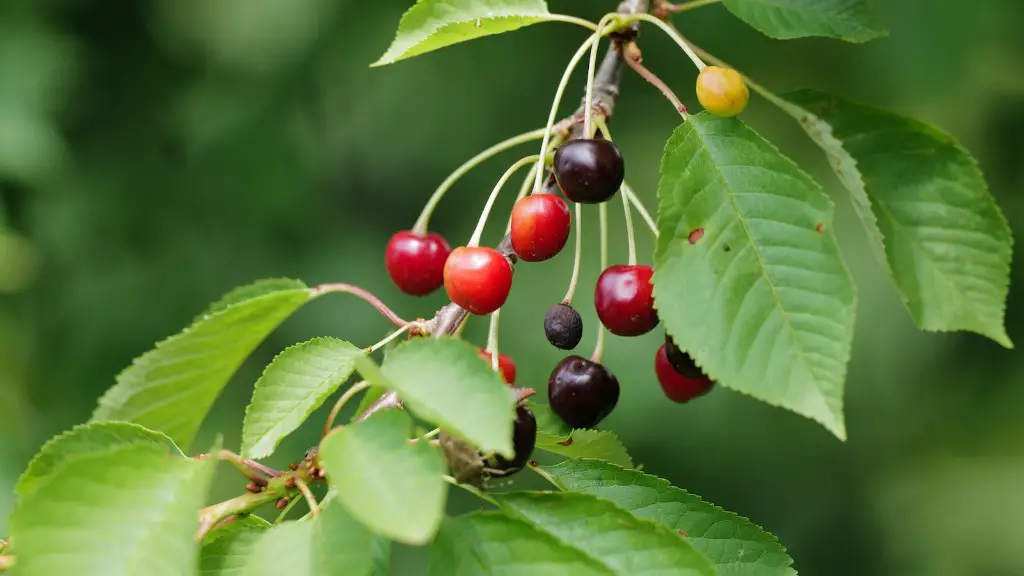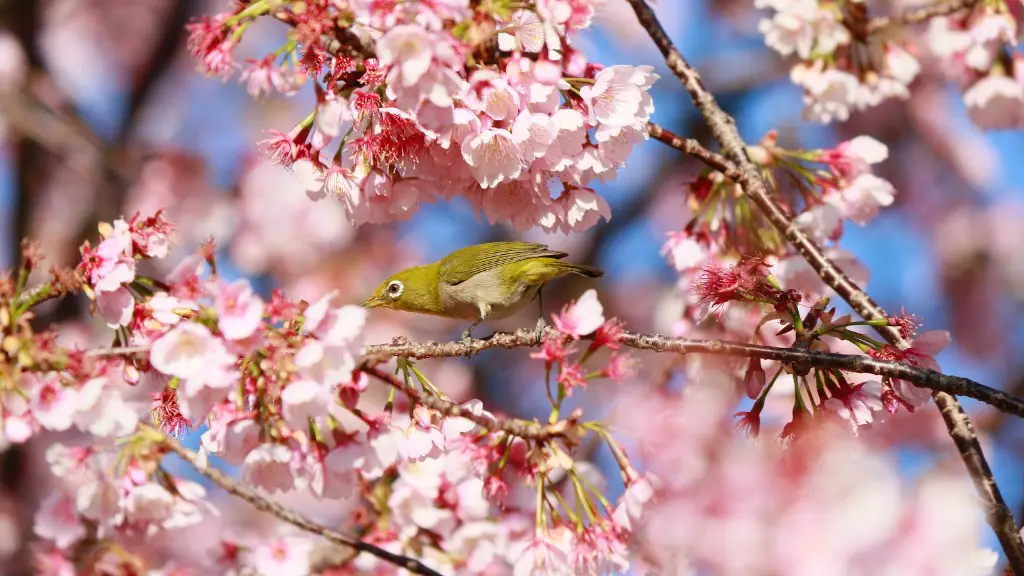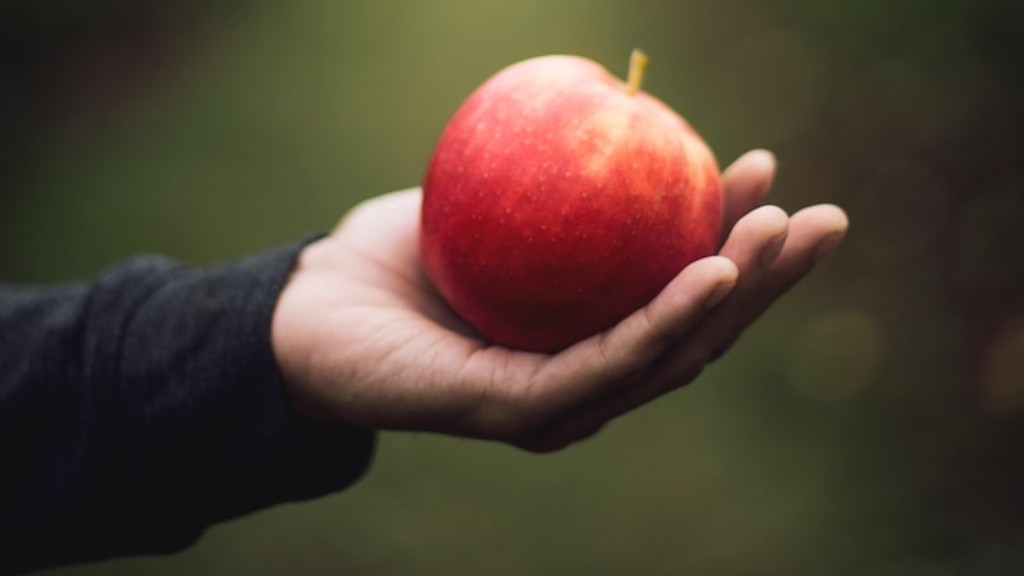Scientific Explanation
Environmental and physiological factors both play a role in why a cherry tree’s leaves can turn brown. It is usually caused by a fungal or bacterial infection, or a water disruption of some sort. Leaf scorch, or necrotic spots, on any type of tree are caused by environmental stress or imbalance, such as too much or too little water, extreme temperatures, high winds or an infestation or disease. When it comes to occurrences like these, it is important to look at the physical structure of the leaf and identify the causes of the damage.
Cherry tree leaves can be affected by a number of fungal and bacterial infections such as brown spot, leaf spot, black canker and powdery mildew. A tell-tale sign of black canker is the distinctive dark brown spots that appear on the leaves. Brown spot is similar to black canker, except it is much more widespread and can cause black, corky lesions on leaves and twigs which can eventually lead to defoliation.
Less commonly, the leaves can turn brown due to nutritional deficiencies. It is advised to fertilize the tree during the growing season with a balanced fertilizer, such as a 10-10-10 or 15-15-15 blend, to ensure the tree is getting the necessary nutrients to stay healthy. In addition, leaf sampling can be conducted in the fall or early spring to determine the nutrient levels in the soil.
Furthermore, over- or under-watering can also contribute to leaf browning. Cherry trees are prone to drought damage and will show browning around the edges of their leaves if they don’t receive sufficient water. On the other hand, if they are overwatered, the leaves can also become brown or yellow as a result of having too much water in the leaves. For this reason, it is best to water cherry trees moderately, as too much can lead to root rot.
Treatment Options
Treating fungal and bacterial infections can be achieved by applying an approved fungicide or bactericide; however, this should only be done after proper diagnoses. It is also important to properly dispose of any leaves that have been affected by a fungal or bacterial infection as this is the most effective way to avoid the spread of disease and preserve the remaining tree leaves.
In order to prevent future occurrences of leaf browning, it is essential to ensure the cherry tree has enough light or sun exposure and is getting the correct amount of water. When it comes to fertilizers, avoid fertilizers with too much nitrogen as this can lead to rich, lush foliage which attracts fungal and bacterial diseases. Lastly, pruning off infected branches, leaves and twigs can help promote healthy new growth.
Pest Control
In some cases, the leaves may be turning brown due to a pest infestation. Regarding the cherry tree, aphids, borers, caterpillars, and scale insects can all cause damage to the leaves and branches. As most of these pests are tiny and can be difficult to spot, it is helpful to enlarge a photo of the tree and inspect it closely. If any of these pests are spotted, it is recommended to use a horticultural oil spray or insecticide in order to combat the infestation.
Signs of Deficiency
Signs of nutrient deficiency in cherry trees may vary but the most evident sign is a yellowing or browning of the leaves. If the leaves are chlorotic, or yellow with green veins, this could indicate an iron deficiency. A sign of a magnesium deficiency can be seen in the form of interveinal discoloration, when the area between the veins of the leaves become yellow. A yellowing of the entire leaves can point to a nitrogen deficiency and a potassium deficiency may present itself in the form of mottled leaves.
Conclusion
In short, cherry tree leaves turning brown can be caused by a number of factors. It is important to identify the cause and then use the corresponding treatment. Environmental issues such as too much or too little water, extreme temperatures, high winds or an infestation or disease can cause leaf scorch or necrotic spots. On the other hand, fungal and bacterial infections, nutritional deficiencies, and pest infestations can all cause leaf discoloration or browning. In order to maximize the health of cherry trees, it is essential to ensure they are getting sufficient light and the correct amount of water, while also avoiding fertilizers with too much nitrogen.
Root Cause Analysis
Root cause analysis is an important tool in diagnosing why a cherry tree’s leaves are turning brown. This includes researching and examining the soil conditions, assessing any visible pests, and inspecting the foliage for signs of disease. Additionally, by taking a leaf sample and looking at the leaf structure and veins, one may be able to identify any deficiencies in the ground. Root cause analysis may also involve examining the health of the root system and examining the tree’s overall health, growth and size.
During the root cause analysis process, it is crucial to view the tree from a global perspective, rather than just examining one single part. This requires the individual to get an in-depth understanding of the whole environment the tree is growing in, from the other plants and trees around it, to the soil and water conditions, to the environment in general. By having an understanding of the tree’s environment, it can be determined what is causing the brown leaves and what can be done to fix it.
Effects of Brown Leaves
Brown leaves can be detrimental to a cherry tree’s health and can even lead to defoliation. When leaves turn brown, photosynthesis is disrupted, leading to a slowdown in the growth process and eventually a decrease in the tree’s overall health. If left unattended, the tree can become more vulnerable to pests, diseases, and stress, leading to even more issues. Therefore, it is important to identify the cause of the leaf browning early and to take measures to prevent it.
Additionally, brown leaves are an aesthetically unpleasing sight and can lead to the devaluation of a property. Therefore, it is important that brown leaves are dealt with quickly as this not only prevents further damage, but also preserves the aesthetic value of the tree and the property.
Safeguard Measures
In order to ward off future occurrences of cherry trees getting leaf browning, it is important to take protective measures. This includes ensuring the tree has proper sun exposure, that it is getting the correct amount of water, and avoiding over-fertilization with nitrogen-rich fertilizers. Additionally, it is helpful to regularly check for any pest infestations, performing root cause analysis, and taking leaf samples to examine for any nutrient deficiencies. Most importantly, it is important to be aware of any changes in the area, such as new construction, that could have a detrimental effect on the environment of the tree.
Moreover, it is advised to keep a regular eye on the tree, looking out for any signs of browning or discoloration. If any of these signs are identified, it is essential to then take steps to diagnose and treat this issue as most soil, water, or pest related issues can be treated if caught early.



